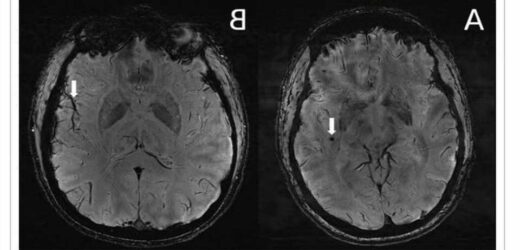SHOCKING scans have revealed a major clue that could help solve the ongoing mystery of why certain people experience debilitating migraines.
MRI images show people who suffer with the painful condition have enlarged fluid-filled spaces surrounding blood vessels in central regions of the brain.
US researchers believe this could suggest these people have problems flushing waste from the brain and the nervous system.
A migraine is usually characterised by a moderate or severe headache felt as a throbbing pain on one side of the head.
Around 10 million people aged 15-69 in the UK suffer from the condition, which costs the NHS around £400million each year, estimates suggest.
The cost to the wider economy is even higher, with around £4.4billion a year lost to three million migraine-related sick days, according to NHS England.
read more on migraines
I’m plagued by agonising migraines so I tested 8 ‘cures’ – here’s my top picks
Women suffer nearly twice as many migraines as men, study shows
Wilson Xu of the University of Southern California in Los Angeles, US said: "In people with chronic migraine and episodic migraine without aura, there are significant changes in the perivascular spaces of a brain region called the centrum semiovale.
"These changes have never been reported before."
Although the nature of the link between oversized perivascular spaces and migraine is unclear, the results suggest that a migraine comes with a problem with the brain's plumbing, the researchers explained.
This is because the brain's waste emptying process, known as the glymphatic system, uses perivascular channels for transport.
Most read in Health
Thousands of Brits don’t know they have a silent killer – the 7 signs to know
I never dreamt I would meet King, says doc who won Sun Who Cares Wins award
PM meets incredible Who Cares Wins nominees for best nurse & midwife
Olivia Attwood looks incredible at The Sun's Who Cares Wins after I'm A Celeb
What are typical migraine symptoms?
Migraines can ruin your day with intense pain and lead you to hide away in a dark room until they pass. Here are some of the most common symptoms
- Throbbing, pulsating pain
- Light sensitivity
- Sound sensitivity
- Nausea
- Pain on one side
- Vision changes, blurred vision
- Aura
- Vomiting
Source:NHS England
"The results of our study could help inspire future, larger-scale studies to continue investigating how changes in the brain's microscopic vessels and blood supply contribute to different migraine types," Prof Wilson said.
"Eventually, this could help us develop new, personalised ways to diagnose and treat migraine."
The latest study looked at the brains of 25 people aged between 25 and 60 years old.
All were healthy and did not have a cognitive impairments or mental health conditions.
Some had frequent migraines, others reported occasional migraines and others reported no symptoms at all.
All of the participants underwent a high resolution brain scan known as a 7T scan, which produces higher resolution images than an MRI.
Read More on The Sun
Code to spot for £600 cost of living payment landing in bank accounts from today
I have UPVC door, there’s a switch to make it less draughty this winter
Results showed migraine sufferers had significantly more enlarged perivascular spaces than those who had never experienced the condition.
Results of the study will be presented next week at the annual meeting of the Radiological Society of North America, in Chicago, US.
Source: Read Full Article











